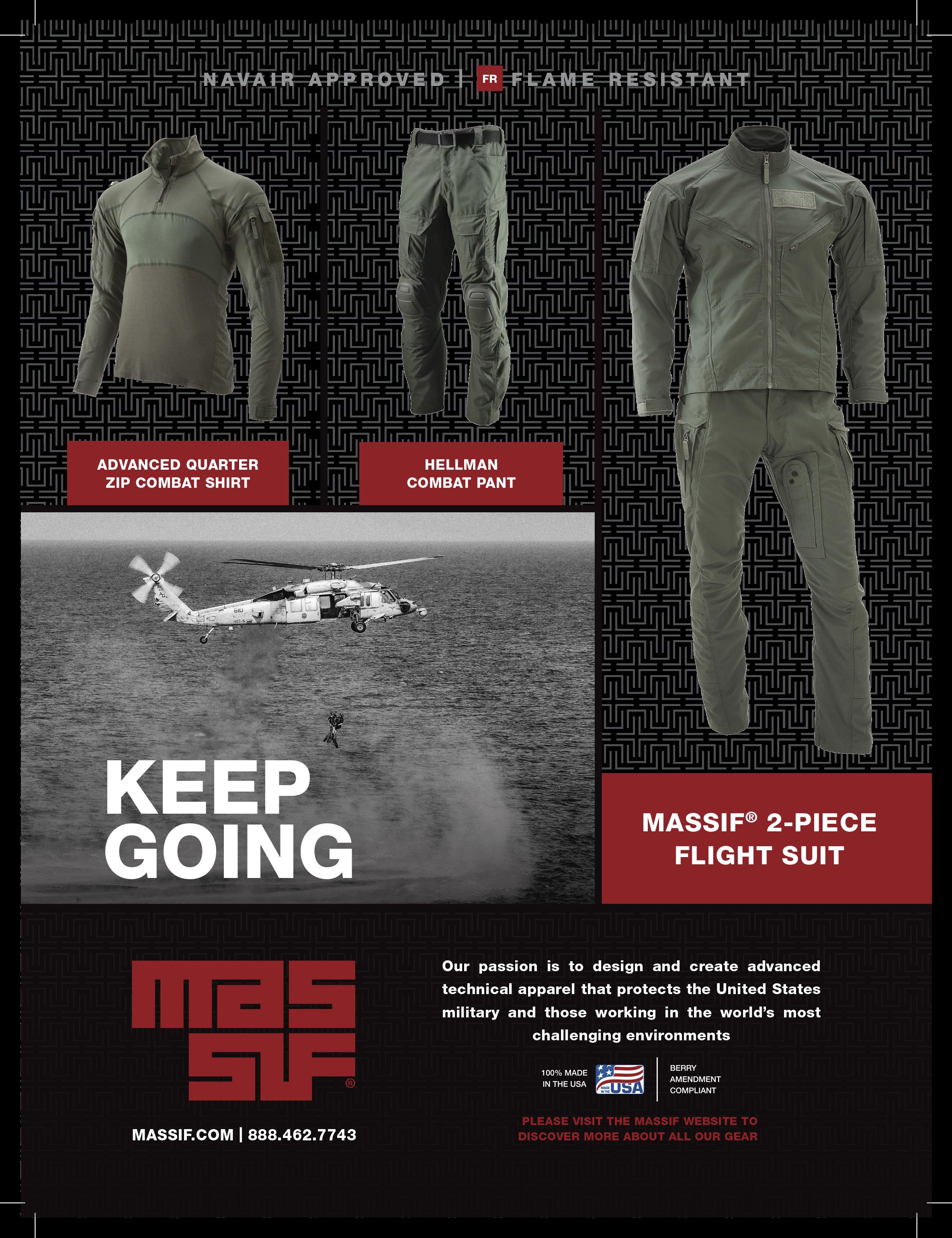
4 minute read
Into the GOO: Our Corona Cruise Experience
By LT John Gildersleeve and LTJG Haley Wahrhaftig
Advertisement
Four AGM-114 Hellfire, 1200 rounds 7.62mm, a fullyloaded countermeasure system, and USS Philippine Sea (CG 58) rapidly approached the Strait of Hormuz (SoH). This transit would be the 10th of 18 total SoH transits for Philippine Sea and the HSM-48.4 Man-O-Wars, the embarked MH-60R detachment. However, for two wideeyed Helicopter Second Pilots, these high-profile flights were our first flights in a forward-deployed environment as part of the detachment. The sorties we flew that day provided a sense of validation to the countless hours of studying and training we had put in during the past three years of flight school and the FRS, but it also marked the end of an unexpected journey. Mid-deployment H2P swaps are common in an expeditionary squadron, as they often are the only solution to provide necessary deployment experience to prospective aircraft commanders. This was the case for us, but, as with most things in 2020, our travels to get there were neither easy nor ordinary.
Three weeks prior to the transit we arrived at Jacksonville International Airport early in the morning, each with more duffel bags than we could carry. We were responsible for transferring our flight gear in addition to everything else we would need for our time underway. After we made it through the gate, we rendezvoused with an aircrewman who was new to the command and who was also part of the mid-deployment personnel swap. Our final destination was Manama, Bahrain, where we would isolate in a hotel for 14 days for COVID mitigations before boarding the ship. After a delay in Newark, a missed flight in Frankfurt, and a layover in London, we arrived in Bahrain three days later. Following a quick COVID test at the airport in Bahrain, the CTF-55 Beach DET picked us up and escorted us to our individual hotel rooms. Opening the door to the hotel room and finally setting our bags down brought a great deal of relief, but it was quickly accompanied by the sinking feeling of knowing we would be quarantined in this room for at least two weeks.
As we settled into our rooms, it was still unclear whether the next few weeks would go as planned. After catching up on some much needed sleep, we each developed similar routines to pass the time. Reading, watching movies, studying, talking to loved ones back home, and working out in the 3x6 foot area of open floor space – there was not much more we could do. Naturally, the time in the hotel was lonely, but it provided an opportunity to relax before getting to the ship. We did not realize how stressful our fast-paced lives in the U.S. were until we were forced to take two weeks off in a 5-star Bahraini hotel.
The time passed slowly, but on day 10 we emerged from our rooms to receive our final COVID tests before we would be cleared to embark the ship. All tests came back negative, and on day 14 we met the Beach Det in the lobby for checkout. We joined a few sailors who had also quarantined at the hotel, some of whom had been there for as long as 40 days! After a short drive, we arrived at the airport where we met the HSC-26.1 Desert Hawks, and hitched our ride to the final destination of this trek. The flight out was smooth, and at last we had reached the ship.
Upon arrival, we were ushered to the quarterdeck by the medical team. Excited to start flying and integrate into the detachment, our introductory brief from the ship’s senior medical corpsman all but crushed our spirits. Our time in quarantine was only two-thirds complete. We understood that there might have been some COVID mitigations on the ship, but they were stricter than expected. If we were not going to a meal on the mess decks, we were expected to be in our racks with the curtains closed. After two weeks in relative luxury, this week was tough. However, we understood that the strict quarantine measures were necessary to ensure we were COVID-free before entering the ship’s bubble; thereby not infecting others or impacting the ship’s operational mission. Nevertheless, the time passed, and our H2P swap in the “new normal” COVID environment was complete. We came out of our staterooms, mask free, and joined the detachment. We were on the flight schedule that same day, as the ship began its Strait of Hormuz transit. In our case, it wasn’t just the destination, but the unusual journey we had to take to get to this point that made it all worth it. Our experience demonstrated that the Navy is prepared to meet complex problems with equally intricate solutions. Despite the complications of COVID-19, the Navy continues to accomplish its mission, while prioritizing the safety of its people.









